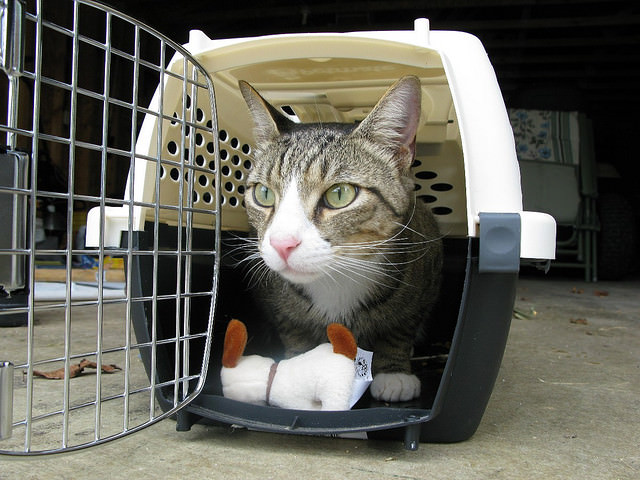Shelters across the country have a steady and critical need for foster homes. Opening up your home to a foster cat makes room for your local shelter to rescue more cats and can give a second chance to a cat who can’t thrive in a shelter environment. Fostering, of course, can help and heal you just as much as the cats you save. In fact, for many people, fostering may be a better option than the longterm commitment of adopting a cat.
Fostering isn’t as easy as simply picking a cat up from the shelter and bringing her home. There are some steps you can take to make your home, your temporary cat, and yourself more safe and comfortable during her stay.

Image Source: shira gal via Flickr.com
1. Cat-proof your home
Everything from an exposed power cord to a stray hair tie can pose a danger to a cat. This article from The Humane Society of the United States has great ideas for how to Cat-Proof Your Home in 12 Easy Steps. Kittens, who are tinier and more mischievous by nature, will require some extra preparation.

Image Source: Helena Jacoba via Flickr.com
2. Prepare a private room with all necessities
Make sure you have all of the necessities before you bring your foster cat into your home. Not having immediate access to a litter box, food, or water will only make an already stressful situation more stressful for her. A private room where she can hide out for a couple days while she adjusts to all of the new sounds and smells of your home will help ease her anxiety. This quiet, private room should contain a clean litter box, food, fresh water, a scratching post, a cat bed, and toys.

Image Source: Tina Lawson via Flickr.com
3. Be generous with the treats
Treats are a great way to help your foster cat associate you with something positive, especially in the beginning when she’ll be unsure of her new surroundings.

Image Source: fauxto_digit via Flickr.com
4. Be intentional about how you introduce resident animals
When you bring a foster cat into your home, it’s wise to keep her separated from your resident cats for at least a few days. This separation will give her a chance to get used to the sounds and smells of your home before having to deal with the complexities of cat relationships.
When you are ready to introduce your foster to your resident cats, there are some steps you can take to make the introduction as easy as possible with minimal stress. Since your foster cat may be staying with you for several weeks to several months, introduce her to your resident cats the same way you’d introduce a more longterm cat. The ASPCA has a great article about the proper way to do this.

Image Source: sneakerdog via Flickr.com
5. Have a decent amount of time and energy to devote
When you decide to become a foster parent, you are committing to devoting the time and energy necessary to create a stable, loving, healing, and enriching home. In addition to the basics like food, fresh water, and a clean litter box, you should plan to provide plenty of play, patience, and cuddles. If you are fostering kittens, you will need to devote extra time for socializing them.

Image Source: frankieleon via Flickr.com
6. Have the ability to transport your foster cat to appointments
Depending on your foster cat’s specific situation, she may need to travel a bit during her stay with you. If she’s in foster care to heal from a surgery or illness, she may have progress check-ups with the shelter’s veterinarian. If you’re fostering kittens, they may need to be transported to get spayed/neutered and vaccinated. Even healthy cats may need to occasionally be transported to adoption events.
